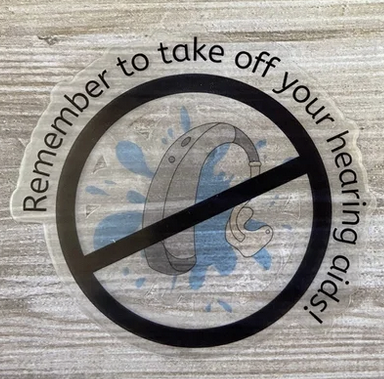Ver pagina en: English | Español
Think You Need Hearing Aids? Here’s Where to Start
If you think you might need hearing aids (see an overview of the various types here), or if you haven’t had your hearing checked recently, the first step is to see an audiologist or a physician. The Food and Drug Administration (FDA) recommends visiting an ENT (ear, nose, and throat doctor, or otolaryngologist) when you first notice a hearing loss. This is so you can be sure there are no other medical conditions that could be responsible for the hearing problem, such as an ear infection.
Although the FDA has now allowed over-the-counter (OTC) hearing aids as an option for adults who have determined—such as via an online hearing test—that they have a mild to moderate hearing loss, seeing a medical professional to rule out medical causes of hearing loss is still a good idea. Consumer Reports has a rundown of what questions to ask yourself before getting OTC hearing aids and how to self-assess your hearing. HearWell, a campaign that partners consumer organizations, hearing professional organizations, and hearing aid manufacturers and retailers, has a FAQ on OTC hearing aids.
The American Academy of Audiology summarizes the differences between an audiologist, hearing instrument specialist, and ENT. Make sure the professional is licensed, and know what that license requires. The American Speech-Language-Hearing Association (ASHA) maintains a list of state-by-state licensing requirements for audiologists and hearing aid specialists.
When Shopping for Hearing Aids
Make sure you have a choice in hearing aid brands. Your provider should consider hearing aids from different manufacturers to help you choose what’s best for you. It’s important to have a choice in hearing aid brands, and independent providers generally carry devices from two to four different hearing aid manufacturers.
Do some homework. After licensing and education, reputation via word of mouth can be important. Talk to friends who have gone through the process about their providers’ listening skills, flexibility, follow-up, and interest in the patient’s priorities. The Hearing Loss Association of America (HLAA) provides a detailed checklist for consumers purchasing hearing aids through a professional.
Choose a convenient location. Make sure the location and office hours are convenient because you may need to make frequent follow-up visits to ensure the hearing aid is programmed correctly for you. Unlike with glasses, hearing aids need to have the fit adjusted and the programs and settings fine-tuned to your unique hearing loss profile.
Ask about related assistive technology. Hearing loops are a helpful assistive listening technology for those using hearing aids, but your hearing aid needs to have a telecoil in it. A hearing loop (essentially a thin copper wire encircling a public space like a church or in a taxi) delivers audio from the public address system directly to the hearing aid via its telecoil. Google Maps has started listing looped venues.
Read the fine print. Find out what standard terms are in the sales contract. Many states have contract requirements specific to hearing aids. Your state attorney general’s office can tell you what rules apply. The Federal Trade Commission suggests that a hearing-aid contract include the following items:
Trial period: Most states require a 30- to 60-day trial period during which the hearing aids can be returned for any reason. You could find that despite follow-up visits, your hearing aid just doesn’t have the right combination of software, features, or fit for you. Find out which fees are refundable if you return the aid during the trial period. Research shows hearing aid use improves brain processing but that it make take some time (and longer than the typical trial period).
Warranty: Ask about the length of the warranty and whether it covers maintenance and repairs. Determine if the office does walk-in repairs and if it provides loaners when needed.
Total price: Check whether the price quoted includes testing and other services, in addition to the hearing aid. Sometimes the provider will include a warranty, free future audiological tests, batteries, and repair in the purchase price.
(The HLAA’s checklist includes these items in detail.)
Ask about follow-up services. You may need to do additional auditory training, develop listening strategies and speech-reading skills, or join a support group, like one offered by a local chapter of the HLAA. Our brains need time to get used to the additional volume and clarity that we get from hearing aids—especially if the brain hasn’t been processing sounds in full for several years, which is a typical lag time between diagnosis and treatment.
Test the device, for real. In addition to audiogram and speech comprehension testing, the provider should conduct a “real ear” test, which tests the hearing aid in the ear to make sure it is working as expected. The shape and size of the ear canal can actually change the sound characteristics.
Shop around, and use the trial period. If you’re not satisfied with a provider’s evaluation or policy on any of the points above, or you want to see what other providers offer, take a copy of your audiogram to use to shop around. And don’t forget the state-required hearing aid trial period—which may apply to OTC devices as well. It’s there for a reason—to help guarantee complete customer satisfaction. It might take time to grow accustomed to your new hearing aids and to learn to use them consistently, but the benefits of treating your hearing loss are life-changing, not least because hearing health is tied to overall health.
Make Sense of the Abbreviations
It can be hard to make sense of the various letter combinations that follow a hearing professional’s name or that are used to establish credentials. Here’s a quick overview:
ABA: American Board of Audiology. Sets standards for audiology certification.
ACA: American Conference of Audioprosthology. A baccalaureate-level course for hearing instrument dispensers with two or more years of experience.
ADA: Academy of Doctors of Audiology. The professional association for doctors of audiology (Au.D.). (See the ADA’s list of patient resources here.)
ASHA: American Speech-Language-Hearing Association. A professional organization for audiology and speech-language pathology practitioners. Provides credentials, advocacy, professional consultation.
BCABA/ABA: Board Certification from the American Board of Audiology. To check if your audiologist is board-certified, look for BCABA after their name, or look them up on the American Board of Audiology website.
CAA: Council on Academic Accreditation in Audiology and Speech-Language Pathology. The accrediting agency for graduate education programs in audiology.
CCC-A: Certificate of Clinical Competence–Audiology. ASHA’s certification for audiologists. This is the entry-level certification most audiologists receive upon passing their national exam.
IHS: International Hearing Society. A membership association that represents hearing healthcare professionals and hearing aid specialists.
NBC-HIS: National Board for Certification in Hearing Instrument Sciences. An organization that provides credentials and support for hearing aid specialists.
BC-HIS: Board Certified in Hearing Instrument Sciences. The NBC-HIS certification program.
Additional Information
Please refer to HHF’s Frequently Asked Questions that includes links to organizations providing financial assistance. ASHA also has information on potential sources of financial assistance.
Here are five common hearing loss myths debunked.
If you are a veteran, you may be eligible to get devices at a discount and fit by a professional at a Veterans Affairs medical center or clinic.
The AARP has tips to get the most out of your hearing aids, including making sure they stay dry.
This is adapted from a 2016 article by staff writer Kathi Mestayer in Hearing Health magazine, updated in November 2022.













A quiet activist is using videos to promote science fact over noise fiction.